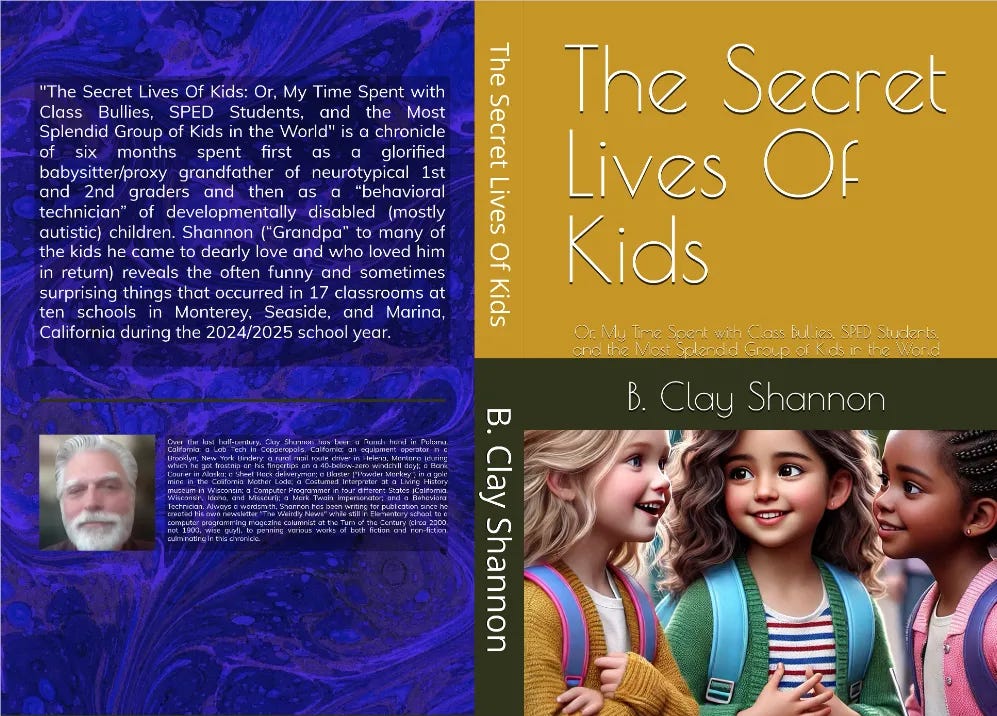“He is free to evade reality, he is free to unfocus his mind and stumble blindly down any road he pleases, but not free to avoid the abyss he refuses to see.” — Alice O’Connor, 1961
1980 — MADD Has a Sad Beginning
public domain image from wikimedia commons
If she were alive today, Cari Lightner would be 58 years old. She died 45 years ago today when a serial drunk driver (who had been released from jail just two days prior) ran into her as she was walking along a quiet road in Fair Oaks, California with a friend.
The driver of the car, Clarence Busch, absquatulated. When he was found and arrested, he was identified as a man who had just been involved in a separate hit-and-run DUI less than a week earlier, and already released from that brief stint in jail.
Cari’s mother Candy channeled some of her grief toward trying to do something about the problem of impaired driving by founding MADD (Mothers Against Drunk Drivers). Ms. Lightner referred to drunk drivers causing the deaths of others as “the only socially accepted form of homicide” due to it rarely being prosecuted with long jail or prison terms or other serious consequences to the malefactor. Busch did spend 21 months incarcerated, a significant but still very lenient sentence, considering the consequences of his actions and that he was a repeat offender.
Shortly after his release, Busch hit yet another girl while driving drunk, coincidentally one with the homophonic (same pronunciation, different spelling) name Carrie. Busch capped his long-loved pastime of driving drunk when he was arrested for the sixth time for it in 1985.
The year that Cari died, 1980, there were 2,500 traffic deaths involving alcohol in California. In 2024, there were 1,120 — less than half as many. Part of that reduction from an average of seven per day to three is due to MADD and its influence on lawmakers regarding emphasis on stronger punishments for driving while intoxicated and stricter limits on how much alcohol in one’s system is considered to be too much (reducing it from a BAC [Blood Alcohol Content] of 0.1% to 0.08%).
On a personal note, my father Theodore R. Shannon (born 1934), is a retired CHP officer. He made it his priority during his CHP career to target drunk drivers, arresting several hundred of them (possibly as many as 1,000) during his 23 years on the job (1966-1989).
How many lives did my father save by being vigilant and even somewhat vendetta-like in his pursuit of inebriated motorists? It’s impossible to say how many, or who they were, but there were doubtless at least a few. And those few matter immensely, even though they and their loved ones are unaware of “what might have been.”
You can read more about my dad’s sometimes funny and sometimes dramatic career in his book Cow County Chip. It can be found here.
Around the same time as Cari Lightner’s death, my father received the Medal Of Valor from the State of California for heroic life-saving attempts. You can read about that here (enter “Shannon” for last name and “1980” for year).
UPDATE: My father just informed me that he received a thank-you note from MADD at his CHP retirement party for his diligent efforts to keep drunks off the road.
Questions: Why was Busch free to drive after just being involved in a hit-and-run a few days before killing Cari Lightner? Busch has most of the blame for Cari’s death, but who else shares a measure of culpability for it?
2007 — Madeleine McCann Goes Missing
public domain images from wikimedia commons
If she is still alive, Madeleine McCann is about to turn 22 years old. She or her remains have never been found since going missing in Portugal on this date in 2007 at the age of nearly four.
Madeleine and her two siblings (two-year old twins at the time) were left asleep in their rented room as their parents went to a bar with friends in another part of the resort. When Madeleine’s mother went to check on the kids around 10 pm, Madeleine was discovered to be missing.
Four months later, in September 2007, Portuguese officials announced that Madeleine’s parents were suspects in her disappearance. Rumors were spread that they had inadvertently given their daughter a lethal dose of a sedative so that they could enjoy their evening with friends. Ten months after that, though, in July of 2008, the parents were cleared of involvement in their daughter’s disappearance. Another suspect was also cleared. Portuguese officials terminated the investigation on the grounds of insufficient evidence to proceed.
If you want to keep an eye out for Madeline, who may still be alive somewhere, you can see this wikipedia article, which shows her at age three and also what she may have looked like nine years later, in 2012 at age nine, which is probably not dramatically different than how she would look today (except for possible hair style and color changes and so forth). I cannot show the images here because they are not in the public domain.
Questions: Is it ever a good idea to leave young children unattended? Is it ever appropriate to give children sedatives [I’m not implying that is what happened in this case, but it was speculated, so it’s worth thinking about]? Regardless of those questions, isn’t it best to give the parents the benefit of the doubt and assume that they simply made a mistake rather than that they may be hiding something sinister?
Read about “The Secret Lives of Kids” here.










